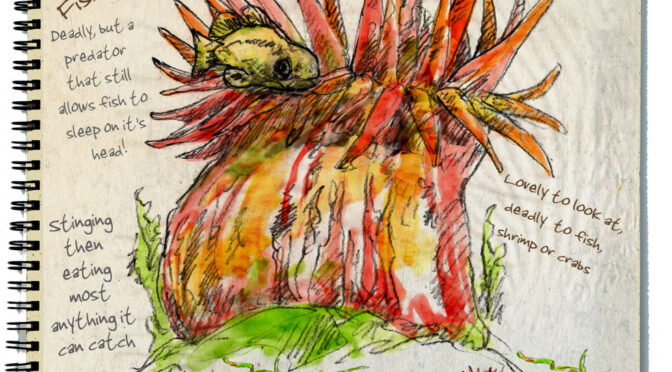Like a scene straight out of ‘Little Shop of Horrors,’ the brilliant red and yellow flower unfolds, over 100 petals waving in the current, a strawberry red delight for a passing perch to nibble on. A young perch moves closer, then closer still, and suddenly receives a stunning jolt that renders it useless. Through the haze, the fish vaguely sees those beautiful petals reach out and pull it towards the flower’s center, where once a flat pad was, now a mouth opens. A delight it’s not, but a splendid sea-predator whose tentacles first sting small fish, shrimp and even crabs, and then entirely consumes them in one slow-motion swallow. Fish go in tail first, and they can turn a crab around so claws are facing away before proceeding.
It gets better. The fish-eating anemone can switch between being male and female – and may live to be 100-plus years of age. Sure they look like beautiful flowers, are related to coral and jellyfishes, but at 10 inches across, these hunters are some of the Salish Sea’s largest anemones. But everyone has a softer side, and the fish-eating anemone may also play host to small fish, allowing six-inch painted greenlings a safe harbor. Leaving the protection of the anemone by day, at night the greenling sleeps without harm right over the anemone’s mouth on the central oral disc. The fish are safe here because anemones use their tentacles for defense against predators like sea stars or snails.
Larry Eifert paints and writes about wild places. His work is in many national parks across America – and at larryeifert.com.

